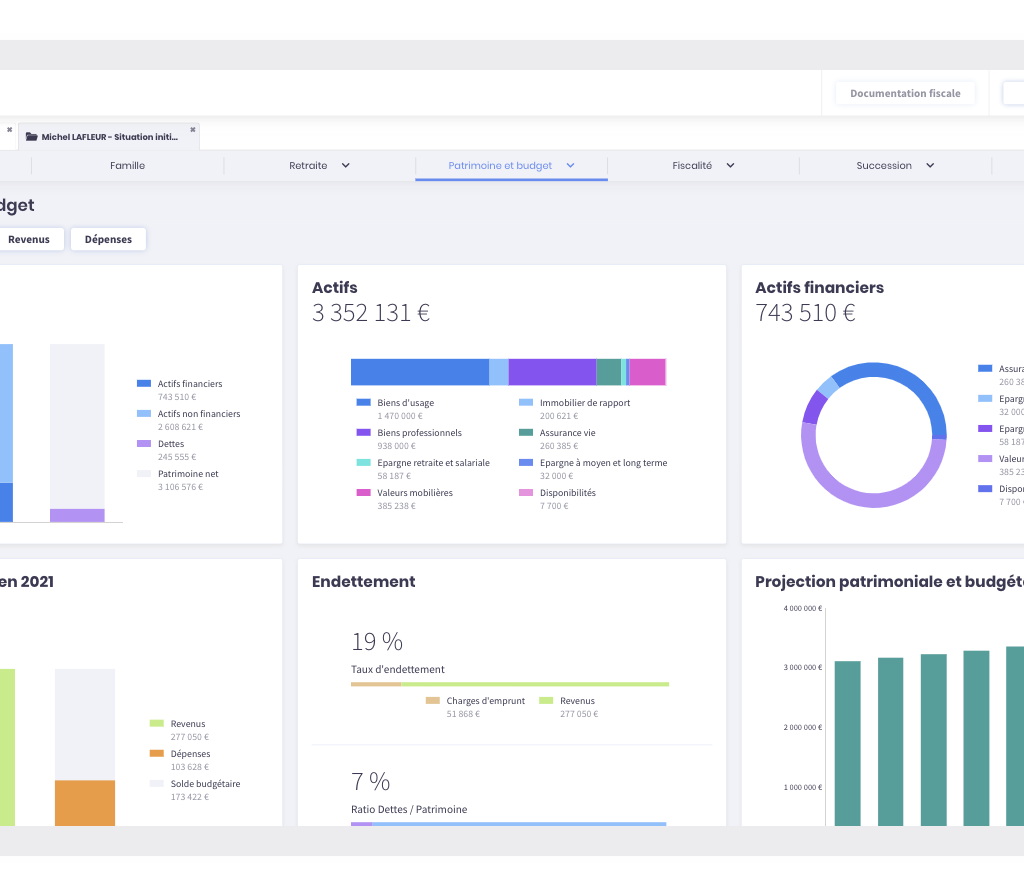Most people only think of financial advisers when they’re already facing a problem—confusion around investing, uncertainty about retirement, or a growing feeling that their money “should be working harder.” But what many don’t realise is that a financial adviser’s true value often lies in the problems you don’t see coming. Their role goes far beyond spreadsheets and forecasts; they act as modern money mentors who step in long before issues escalate, helping you build security, clarity, and confidence in your financial life.
In a world where financial products change constantly, investment markets move quickly, and economic uncertainty feels like the new normal, having an expert in your corner is more important than ever. Financial advisers help align your money with your goals, protect you from unseen risks, and give you strategies that turn confusion into progress.
This article explores the hidden value financial advisers bring—from smart planning and risk management to shaping long-term clarity and confidence. Whether you’re an Australian navigating superannuation or an everyday reader trying to build a solid financial path, expert guidance can make a remarkable difference.
The Adviser as a Modern Mentor: Why Their Role Has Evolved
Traditional financial advisers were mainly associated with managing investments. Today’s advisers, however, wear multiple hats: strategist, coach, problem-solver, risk manager, and long-term accountability partner.
Why the shift?
Because money is no longer just about earning and spending—it’s about making informed decisions at every stage of life. The modern financial landscape is more complex, but also more opportunity-rich. A skilled adviser helps you understand that complexity without being overwhelmed.
They translate financial jargon into everyday language.
They help you prioritise goals.
They turn broad intentions like “save for retirement” into actionable plans.
And more importantly, they bring clarity where most people feel uncertain.
This mentorship-style approach is where the hidden value truly lies.
Financial Planning: Solving Problems Before They Appear
Many people don’t know where financial planning begins, and that’s exactly what advisers help clarify.
1. Creating a Clear Roadmap
A financial adviser helps you turn vague goals into a personalised plan. Instead of thinking:
- “I should probably save more”
- “I need to buy a home someday”
- “Retirement seems far away but important”
They help you outline exactly what steps to take, and in what order.
2. Removing Guesswork
Without guidance, people often make decisions based on fear, pressure, or misinformation. A financial adviser brings logic back into the picture.
They help you avoid:
- saving too little
- insuring too late
- investing too aggressively (or not enough)
- forgetting about taxes
- overlooking hidden costs
You don’t just get a plan — you get a plan that actually works.
Risk Management: Fixing Hidden Threats You Might Never See
Here’s something crucial: most financial risk isn’t visible unless you know where to look.
A financial adviser is trained to spot:
- insurance gaps
- superannuation inefficiencies
- investment risks hidden behind “good returns”
- tax obligations that can slowly drain wealth
- market overexposure
- budgeting blind spots
It’s not about being negative — it’s about being prepared.
Insurance That Actually Protects You
From income protection to life cover to trauma insurance, advisers help ensure you’re not paying for the wrong policy or missing the one that could save your financial life.
Shielding Your Family’s Future
Your adviser protects what matters most—your lifestyle, assets, family, and long-term stability.
The truth is simple: unmanaged risk is expensive. Professional guidance makes sure you’re never caught off guard.
See more: Top 10 Wealth Management Tips for Long-Term Financial Success
Investment Strategy: Turning Confusion Into Confident Growth
Investing is one of the biggest sources of financial anxiety for everyday Australians. Markets change, interest rates move, and economic news can be overwhelming.
A financial adviser becomes your investment co-pilot, helping you:
1. Choose Investments That Suit Your Risk Profile
Not too risky, not too conservative—just right for your goals.
2. Avoid Emotional Decisions
When markets rise and fall, fear and excitement can lead to poor choices.
Your adviser keeps your strategy steady and logical.
3. Diversify Properly
It’s not about having many investments — it’s about having the right mix.
4. Adjust Your Portfolio When Life Changes
Marriage, kids, job changes, business growth, inheritance — each one impacts your investment strategy.
5. Understand Where Your Money Is Going
No more guessing or blind trust. Advisers explain your investments in simple, clear terms.
Investing becomes something you understand, not something you fear.
Retirement Guidance: Shaping a Future You Can Actually Look Forward To
Retirement planning is one of the most misunderstood areas of finance. Many people assume superannuation alone will be enough — until reality proves otherwise.
A financial adviser helps you:
Calculate what retirement truly costs
Many underestimate expenses or forget rising living costs.
Maximise your superannuation
Whether it’s contributions, tax strategies, or fund selection, small improvements compound into big results.

Create predictable, sustainable income
An adviser helps you build income streams you can rely on — not just hope for.
Prepare emotionally as well as financially
Retirement isn’t just about money. It’s about lifestyle, identity, and life satisfaction.
The hidden value?
Your adviser ensures you can retire confidently, not cautiously.
Long-Term Clarity: The Most Overlooked Benefit of All
While strategies and investments are crucial, one benefit stands above the rest: clarity.
Financial clarity reduces stress, improves decision-making, and gives you a sense of direction. Most people underestimate the emotional impact of financial uncertainty. When you have an adviser, you’re not just managing money — you’re managing peace of mind.
What long-term clarity looks like:
- knowing exactly what your goals are
- understanding how much you need to save
- seeing a clear investment path
- feeling confident about retirement
- having a trusted expert to call when life changes
That clarity transforms your wealth journey in ways spreadsheets alone never could.
Why Australians (and Global Readers) Benefit From Expert Guidance
Australians in particular face a unique financial environment—superannuation rules, property market challenges, fluctuating interest rates, and varying tax obligations. But no matter where you are in the world, financial complexity is universal.
A financial adviser provides value through:
✓ Expertise you can trust
Financial rules and markets change constantly. Advisers stay ahead so you don’t have to.
✓ Accountability
Plans are easy to make and easy to abandon. Advisers help keep you on track.
✓ Time savings
You avoid research overload, second-guessing, and trial-and-error.
✓ Better decision-making
Good advice leads to smarter, more confident financial choices.
✓ Optimised outcomes
From tax efficiency to investment returns, expertise improves results.
Simply put:
You don’t know what you don’t know. A financial adviser fills those gaps so you can move forward with confidence.
Conclusion: It’s Time to Move From Uncertainty to Control
The greatest financial risks aren’t always obvious. The biggest opportunities often go unnoticed. And the path to financial clarity is rarely straight. That’s where the hidden value of a financial adviser truly shines.
They protect you from unseen dangers.
They guide you toward long-term success.
They simplify complex decisions.
They help you turn confusion into confidence.
If you’re ready to build a smarter, more secure future, partnering with a financial adviser may be one of the most valuable decisions you ever make.
FAQS
Financial advisers offer far more than basic money management. They identify risks you may overlook, build strategies tailored to your goals, and guide you through complex financial decisions. Their expertise provides clarity and confidence, helping you avoid costly mistakes while maximising opportunities for long-term growth and security.
Advisers use experience and research to help you avoid common pitfalls such as poor investment timing, inadequate insurance, tax inefficiencies, and lack of diversification. Their proactive guidance prevents issues before they escalate, helping you make informed and strategic decisions that protect your wealth throughout life’s different stages.
During volatile markets, people often make emotional decisions that lead to long-term losses. A financial adviser keeps your strategy steady, explains market movements clearly, and helps you stay focused on long-term outcomes. Their objective guidance protects you from panic-driven choices and ensures your investments remain aligned with your goals.
A financial adviser helps you define your goals, map out practical steps, monitor progress, and adjust strategies as life changes. This consistent support reduces stress and gives you a clear understanding of your path forward. Over time, you gain confidence knowing your finances are structured, protected, and aligned with your future aspirations.
Anyone facing financial complexity—buying property, starting a family, investing, planning retirement, receiving an inheritance, or running a business—benefits from expert guidance. A financial adviser helps simplify decisions, optimise opportunities, and provide direction, ensuring you build a secure, well-structured, and confident financial future.


















